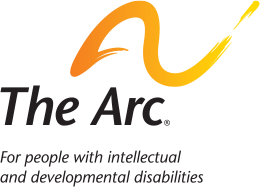A Major Supreme Court Win: Discrimination Protections for Students With Disabilities
On June 12, 2025, the U.S. Supreme Court released its decision in A.J.T. v. Osseo Area Schools, a case that could’ve shook the very foundation of disability civil rights. The Court ruled that students with disabilities have the right to seek justice for discrimination in schools without facing legal barriers that don’t exist in workplaces, housing, or other areas of public life. Here’s why this case matters and what you need to know.
What Is the A.J.T. v. Osseo Area Schools Case About?
This case is about whether federal disability rights laws require children with disabilities to meet a strict “bad faith or gross misjudgment” standard when suing because they experienced discrimination in K-12 public schools. This standard means that families would have to prove that school districts and/or administrators acted with a level of intent beyond negligence or indifference, requiring evidence of dishonesty, ill will, or a conscious disregard for the student’s rights This high standard is not required to prove disability discrimination in any other context, including in the Americans with Disabilities Act (ADA) and Section 504 of the Rehabilitation Act, which only require showing that the defendant acted with “deliberate indifference.”
What Laws Protect Students With Disabilities?
The Individuals with Disabilities Education Act (IDEA) guarantees a free, appropriate public education for eligible students who have disabilities and need specialized instruction and related services. These services are established in an individualized education plan (IEP) that is created by the child’s parents and the school.
Section 504 of the Rehabilitation Act of 1973 prohibits discrimination in places that receive federal funding. Most, if not all, public schools receive federal funding. Section 504 requires schools to provide reasonable accommodations for students with disabilities. Reasonable accommodations can include allowing a child with diabetes to eat whenever necessary and not be limited to snack of lunch time.
The Americans with Disabilities Act bars discrimination in services provided by state and local governments. Public schools are operated by state or local governments. Like Section 504, the ADA requires schools to provide reasonable accommodations to students with disabilities.
What Are the Facts of the Case?
Ava is a student with epilepsy who needed evening instruction due to her seizures, which are so severe in the morning that she can’t go to school until noon. Due to this delayed start, she receives half the educational time as her peers do. Her parents asked for evening instruction to make up for these lost learning opportunities, but the school district denied their requests. Ava’s parents then sued, alleging violations of Section 504 of the Rehabilitation Act (Section 504) and the ADA.
Both the District Court and the Court of Appeals decided that a school district’s failure to provide reasonable accommodations is not enough to establish a violation of Section 504 and the ADA. Instead, the lower courts look to see if the school acted with “bad faith or gross misjudgment.” This is a hard standard to meet, and is only applied in certain jurisdictions. It is not applied to other ADA or Section 504 claims outside of school settings. After losing at the District Court and the Court of Appeals, Ava appealed to the U.S. Supreme Court.
What Did the U.S. Supreme Court Decide?
In a unanimous decision, the U.S. Supreme Court held that students should not have to show that a school acted in bad faith or with gross misjudgment in order to bring a Section 504 or ADA claim. The Court held that “ADA and Rehabilitation claims based on educational services should be subject to the same standards that apply in other disability discrimination contexts.”
The Court explained that the text of Section 504 and the ADA indicate that courts should not apply a higher standard for discrimination in the K-12 education context than they would in any other disability discrimination case. The ADA and Section 504 plainly applies to “qualified individuals with disabilities” without any reference to where the disabled person obtains a covered service. The U.S. Supreme Court acknowledged that students with disabilities “face daunting challenges. . . those challenges do not include having to satisfy a more stringent standard of proof than other plaintiffs to establish discrimination under” the ADA and Section 504.
The Court also refused to consider a sweeping argument seeking to gut federal disability rights laws by requiring people with disabilities to prove intent in every case of discrimination. That position is flatly inconsistent with the law and would have stripped millions of people with disabilities of the protections Congress put in place to prevent systemic discrimination. The very foundation of disability civil rights was on the line.
The Court made clear that schools cannot be held to a lower standard of accountability than other public institutions. Students with disabilities should not have to fight an uphill battle just to hold their schools accountable for unlawful discrimination.
The Arc’s Position
The Arc of the United States has a storied history with federal education laws. In 1971, before federal protections for people with disabilities existed, states were free to exclude children with disabilities from their public schools—and many did. Millions of children were denied an education, not because they couldn’t learn, but because our society didn’t believe they were worth educating. That changed because of federal action. Parents, led by The Arc, fought in court and won. Their victory laid the foundation for the IDEA, which secured the right to a free, appropriate public education for students with disabilities, regardless of the nature or severity of their disability
The Arc’s position statement on education states that all students ought to receive the education to which they are legally entitled; that is a free appropriate public education that includes fair evaluation, the right to progress, individualized supports and services, high quality instruction, and access to the general education curriculum in age-appropriate inclusive settings. All those involved in the education of students with disabilities must ensure that their individualized needs are taken into consideration, that they are challenged and have ambitious goals, and that their families have meaningful participation in the design and monitoring of their Individualized Education Programs (IEPs).
The Arc, alongside other disability rights organizations, submitted an amicus brief in support of the disabled student Plaintiff in A.J.T. The brief gave several case examples where a higher standard of proof enabled schools to freely discriminate against students with disabilities.
How Does This Case Impact People With Disabilities?
This case is important to both students and parents of students with disabilities. The ADA and Section 504 provide relief from education-related discrimination, but many courts applied the gross misjudgment standard. This standard made it harder for students to seek relief in federal court. By overturning that standard, the U.S. Supreme Court’s common-sense decision in A.J.T. v. Osseo Area Schools will allow more disabled people to vindicate their rights in a court of law. The Court restored the full protection of federal disability nondiscrimination law to millions of disabled students. This case was a victory for students with disabilities and their families.








